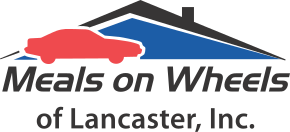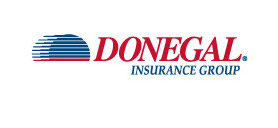Dozens of Lancaster residents stopped by Martin Luther King Elementary School Wednesday evening to pore over site plans, schematic-cross sections, illustrations and diagrams.
The occasion: An open house featuring a quartet of upcoming street projects in the city’s southeast.
All four are designed to calm traffic, improve safety for motorists, cyclists and pedestrians and beautify the streetscape. The largest is scheduled to start later this year; the other three are pegged for 2025 or later.
All told, they will represent an investment of close to $8 million in the southeast’s road network, Public Works Director Stephen Campbell said.
They four projects are as follows:

South Duke Street
- Area: South Duke Street between Church Street and Chesapeake Street.
- Estimated cost: $3.1 million
- Summary: Narrow the traffic lanes to calm traffic and reduce speeds; add a buffered path for pedestrians and cyclists. The project will add parking capacity by expanding angled parking, increasing the total number of spaces from about 77 to 96.
- Construction: 2024-25
Broad & Chesapeake streets
- Area: Chesapeake and Broad streets between South Duke and East Orange streets
- Estimated cost: $1.3 million
- Summary: Narrow the traffic lanes to calm traffic and reduce speeds; add a separated bidirectional bicycle path; add piano-key crosswalks and other safety enhancements at intersections.
- Construction: 2025-26
Ann & Juniata streets
- Area: Ann Street from Dauphin to Juniata; Juniata Street from Stevens to Rockland
- Estimated cost: $450,000 for Phase 1. Additional funding will be needed to complete all work.
- Summary: Safety improvements will include intersection redesign, possibly including a raised intersection, sidewalk reconstruction and ADA ramps. Streetscape enhancements will include more trees, pedestrian lighting and possibly public art.
- Construction: 2025-26.

Church Street
- Area: Church Street between South Queen and the intersection with Lime and Vine
- Estimated cost: $1.0 million to $1.5 million
- Summary: Narrow the traffic lanes to calm traffic and reduce speeds; add a path for pedestrians and cyclists, buffered from motor vehicles by a “tree lawn” with street trees and lighting.
- Construction: 2026-27.
For more information
The Department of Public Works has posted extensive information about its Southeast Lancaster Street Improvement Projects on the Engage Lancaster online portal.
As with any construction timeline, the ones above are tentative and subject to change. That said, with regard to South Duke Street, the first of the four, the engineering work is on track, as are discussions with the state Department of Transportation, so the city is reasonably hopeful that it can break ground this year as planned, Deputy Public Works Director Cindy McCormick said.
Grant funding, including money from PennDOT and from Lancaster’s federal Safe Streets for All award, will cover much of the work, though some city funds will be used as well. All four projects contribute to Vision Zero, the city’s plan to eliminate traffic deaths, and to its “active transportation” goals of promoting walking and biking.

Campbell said that featuring multiple projects at a single event is a first for his department. He’s happy with the turnout and how everything went.
When you hold individual meetings for individual projects, he said, people lose sight of the big picture. Moreover, the format sometimes leads to some people grandstanding, while others stay quiet.
The open house format lets people see how each project relates to its neighbors — hopefully creating a sense of shared benefit across the neighborhood. Moreover, it allows everyone to mingle freely and chat informally with city staff and project consultants, as opposed to standing up at a meeting to make a public comment.
“I’d like to do this again,” he said, and not just for streets but for other project categories. “… This allows for synergy.”








